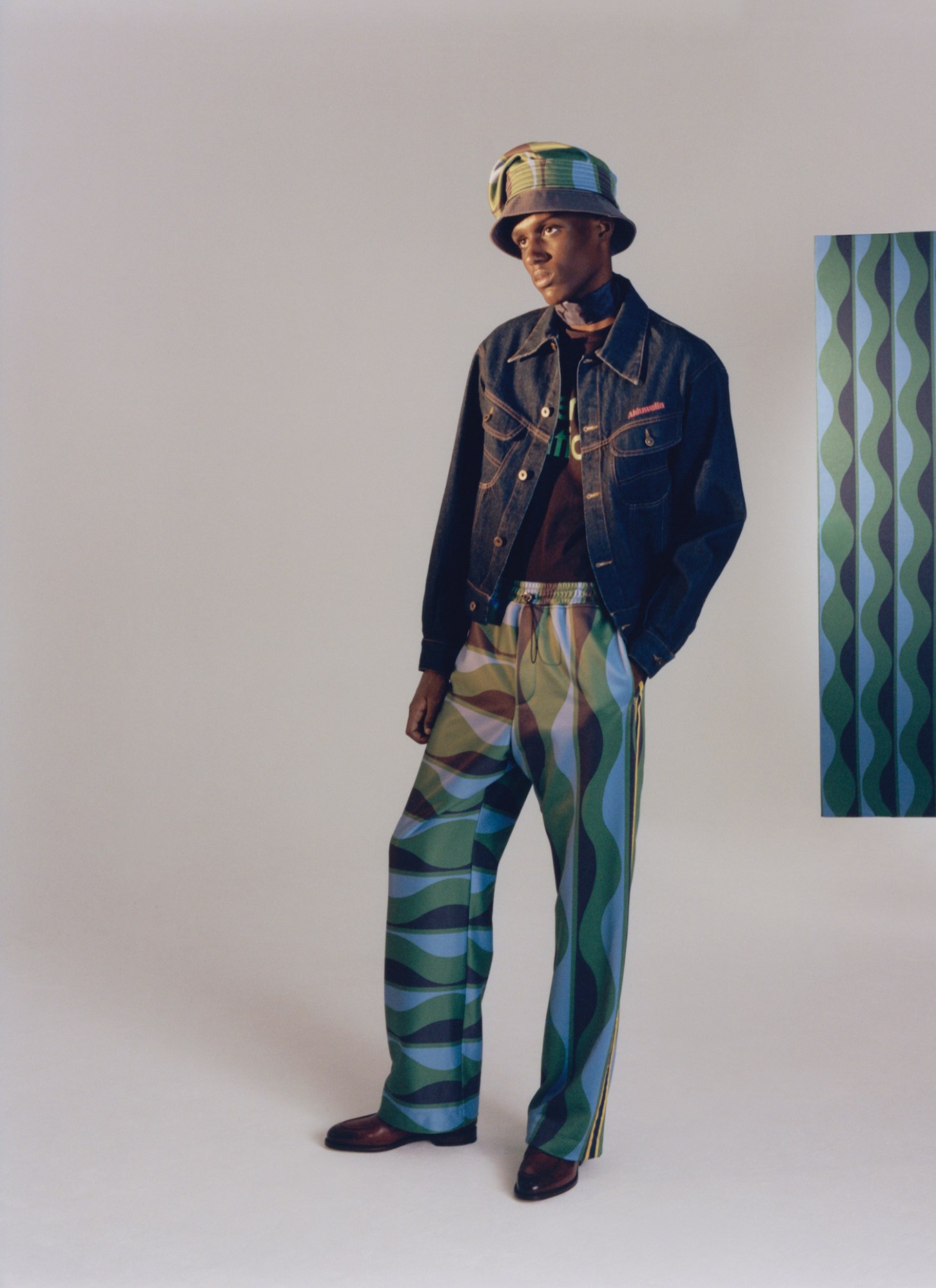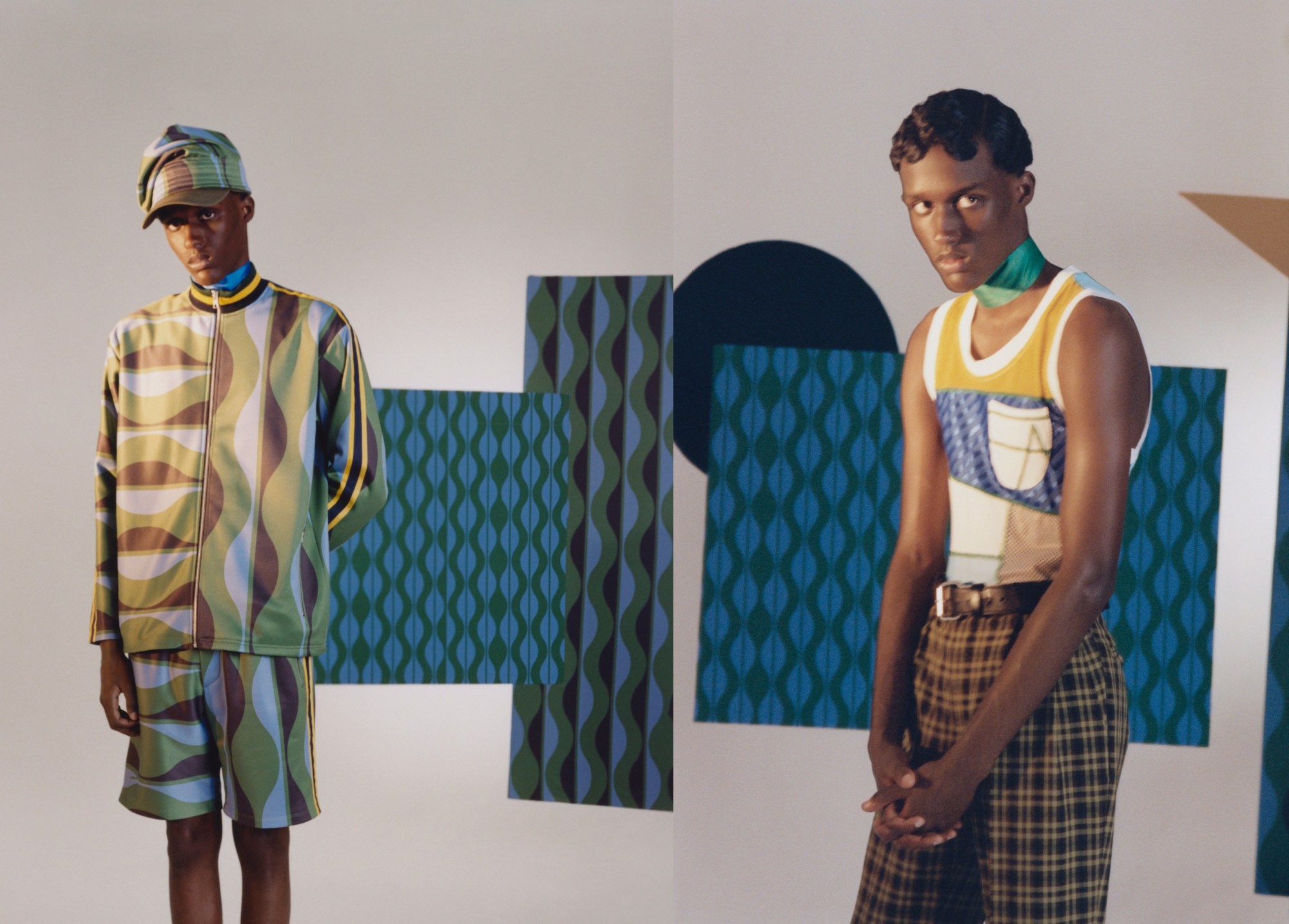That 2020 has marked a turning point for many of London’s young designers is something you’ll have heard often this season — and something which Priya Ahluwalia attests to. It’s not been the kindest year, she shares, particularly on the business side of things. As will be the case for countless others, once-reliable sales accounts have been lost as a consequence of the pandemic — a knock for any brand on the rise, even if it has been as meteoric as Ahluwalia’s.
Still, every trough has its corresponding peak — and for Priya, recent times have brought their fair share. At the beginning, she made the final of the LVMH Prize. Back in June, there was the launch of Jalebi, a stunning visual paean to Southall and the Punjabi community that calls it home, as both a physical photography book and immersive VR exhibition. Then, last month, it was announced that she would be part of Matches’ Innovators programme. In addition to that, she’s moved into a spacious new studio, exponentially increasing the efficiency of her brand’s operation.
To cap it all off, she’s now putting her SS21 collection, Liberation, out into the world. It’s a living testament to her ability to turn moments of hardship into sources of strength and celebration. Though characteristically very Ahluwalia, those familiar with previous collections will notice a comparatively muted palette, leaning more heavily into earthen hues — forest greens, greys, beiges and browns. On the flip side, though, it’s perhaps her most graphically sophisticated output yet.
That’s in part down to her collaboration with Lagos-born, British graphic designer Dennis McInnes, who created prints and visuals that reference Nigerian newspaper clippings from the 1960s and further archival material documenting the protests and episodes of civil unrest that marked the first days of the country’s independence. They’re highlighted in the geometric shapes that punctuate the collection’s lookbook imagery, shot by Joyce Ng and styled by Nell Kalonji.
With her collection releasing today, Priya walks us through the patchwork of references that make up Liberation, as well as her experience of pulling it all together over lockdown.
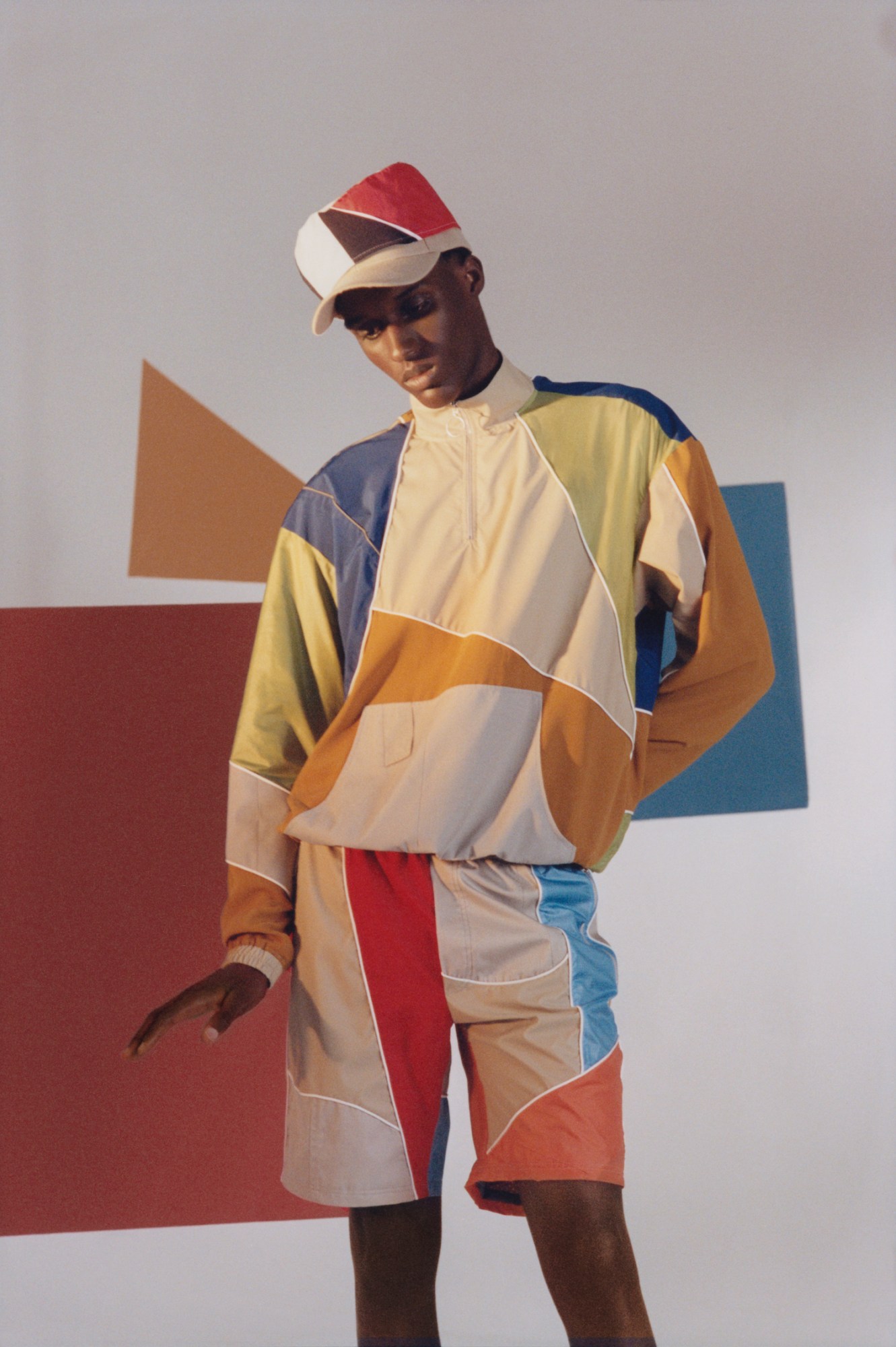
How have you found working on a new collection in such turbulent times?
It’s definitely been turbulent. Lockdown wasn’t kind to the business, in that we lost accounts and things like that, but I was still able to move into a new studio, which is a much bigger space than before. It’s been something really positive, a new chapter.
Have there been any other unexpected positives to working through this period?
Yeah, one is that I’ve found that I can now be a bit more honest and unapologetic about how I feel and what I think. I just feel like people are listening more closely to ideas around authenticity and storytelling, which is something that’s been quite freeing for me.
That ties in nicely with the title of the collection, Liberation. Could you tell us a bit more about what’s behind it?
It’s really about this idea that everyone has been protesting for the liberation and freedom of Black people globally for the past few months, for people to respect us as they respect one another. And I think it’s so important that we’re heard.
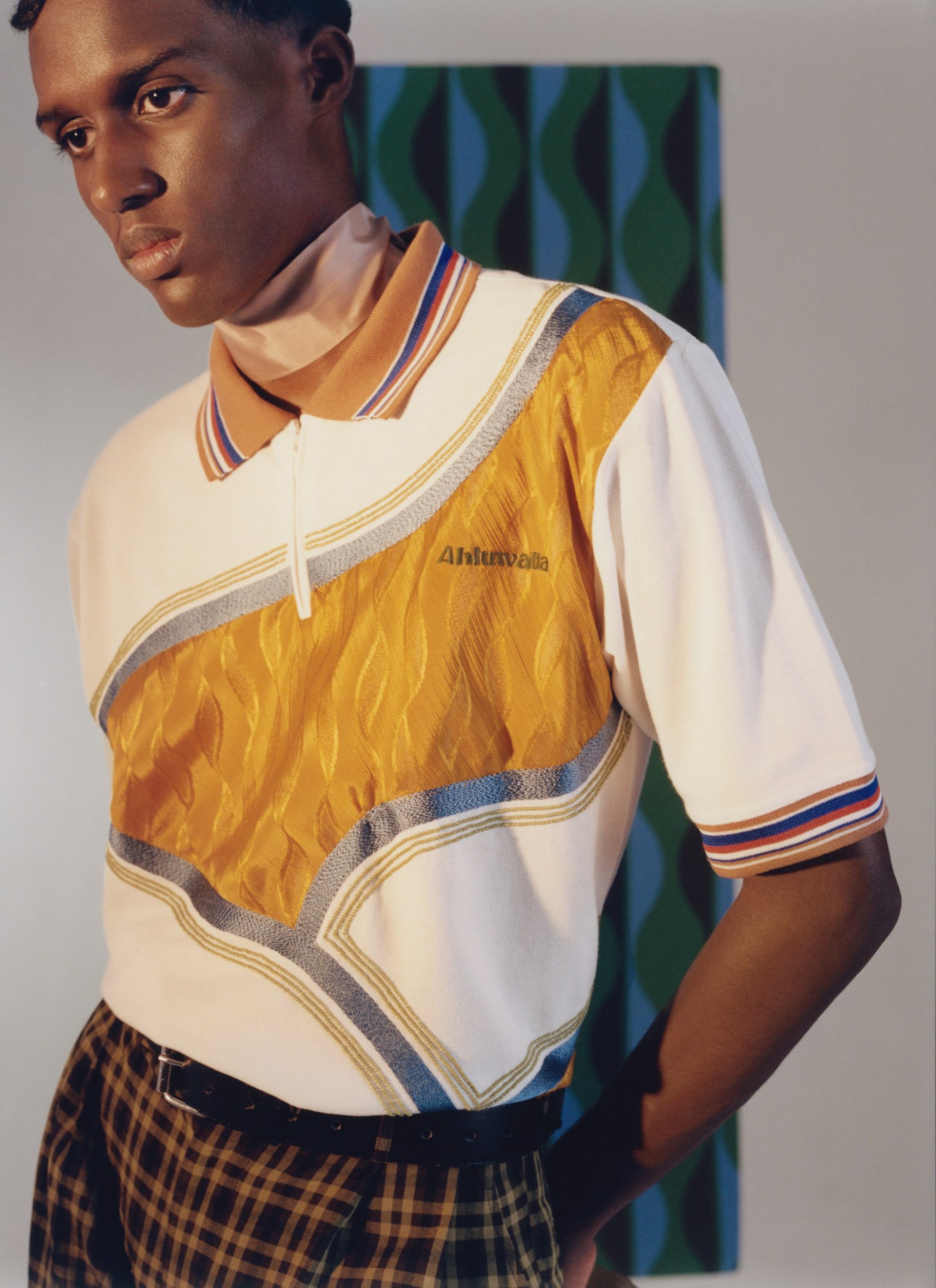
Your collections are always meticulously researched. What was the starting point this time around?
I was looking at different books in my studio on the subjects of protest and ideas about Black beauty. I was also looking at traditional Nigerian fabrics and patterns, and the idea of ancestral honouring and putting a fresh spin on it. At this particular moment, it’s something I really wanted to celebrate. With this collection, though, I started designing knowing that there weren’t going to be physical fashion shows. I’d just been through the amazing experience of doing the virtual reality exhibition for Jalebi with Laurence Ellis and Chameleon Visual, so I was thinking about how this collection could be communicated on a screen, which I’ve never done before. I wanted it to be really graphic, which is why I brought Dennis on board.
A lot of it was us looking at old newspaper articles from Nigeria in the 60s, where we found lots of graphics that we really liked. And also in the photographs, everyone’s so smartly dressed, there was such a sense of pride that I wanted to include. That said, even though it’s a graphic and colourful collection, it’s still quite muted and grounded for me, with lots of earthy and grey tones.
With the newspaper clippings from Nigeria in the 60s, were you at all drawn to them because of what was happening in the country post-independence?
Yeah, I was looking at things from different periods, including pictures from current protests, but there was definitely stuff that directly related to what was happening in Nigeria post-independence. That said, we wanted to make sure that we weren’t trying to politicise clothing, because that means reducing these issues and conversation to what, a jumper? That doesn’t make any sense to me. At the same, I wasn’t interested in thinking about or researching anything else at the moment. I’m Black and I’m Indian, so these topics affect me. I’ve also woken up to ways that I was existing in a system of white supremacy that I hadn’t even realised. I feel like I’m in a really big learning period, and trying to develop as a person, so there was no way for me to do my job without speaking about the subject matter.
What I don’t want to do, though, is reduce that to clothing. And I want people to enjoy wearing it! I don’t want people to buy a jumper and think, ‘Oh my god! The world is so depressing! Black people are oppressed everywhere!’ That’s got to be balanced with a sense of joy and celebration, which I think comes through with the colour blocking, the graphics and the prints.
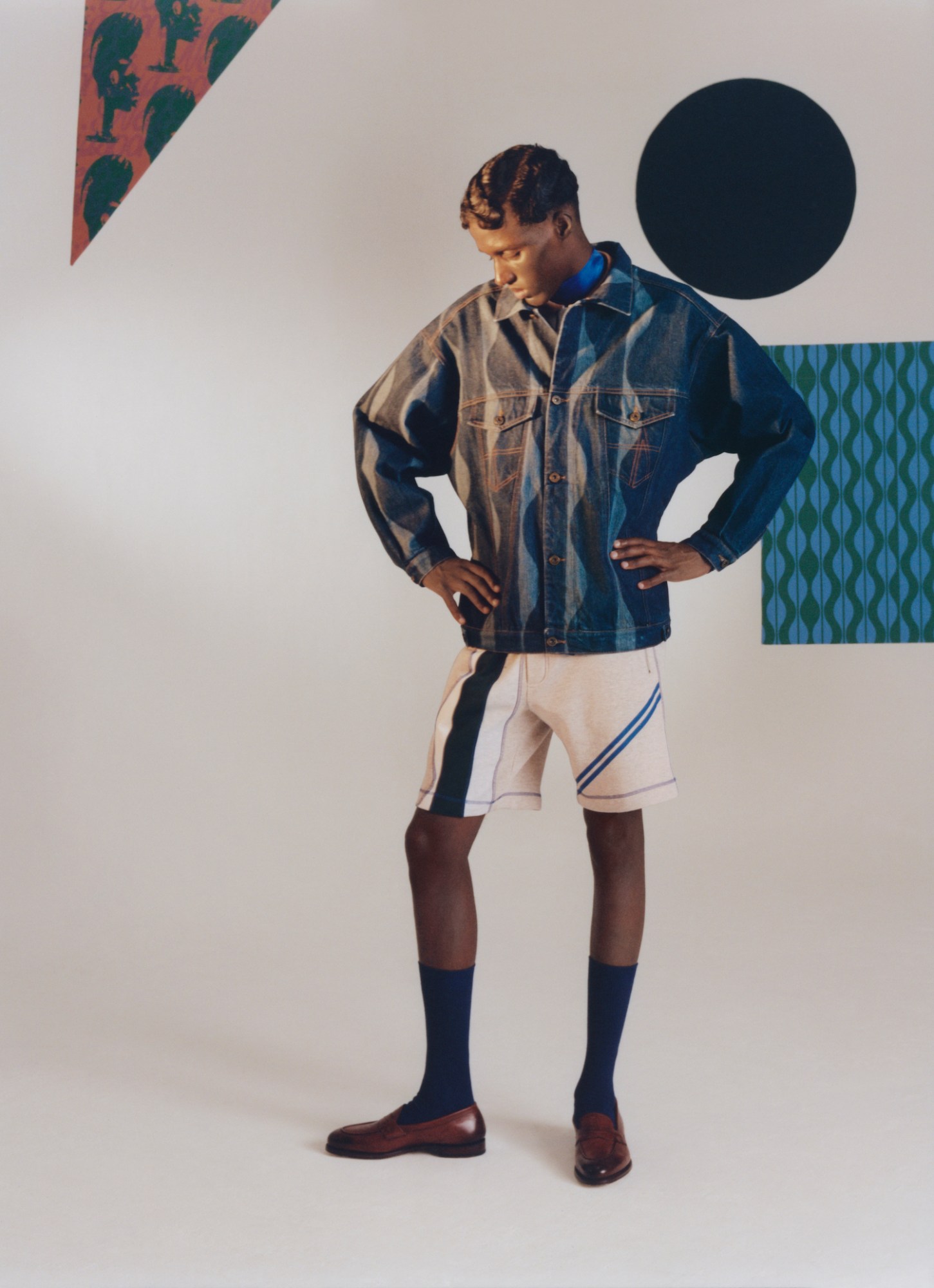
What was the story there?
They were developed with Dennis, he knew that I wanted some placement graphics, as well as some all-over prints. There’s an orange and green one, which is a reinterpretation of traditional Nigerian masks that we’ve made into our own sort of camouflage. And the writing over it reads ‘New Diaspora’. We’ve also got lasered graphics, vinyl graphics and printed graphics, so there’s still that multilayered element that we have every season.
One of your sources of inspiration this season was Data Portraits: Visualising Black America by W. E. B. Du Bois…
Yeah, it’s this beautiful book that I bought at the Tenement Museum in New York. It’s one of the best museums I’ve ever been to in my life, and the bookshop is stocked with so many books about different communities coming to the US. It’s an illustrated book on different statistics about Black people, with beautiful infographics in bright pink and blue and green. I just thought that was so important to see, as it’s one of the few sets of statistics I’ve seen around Black people in the West that included women — they’re usually really male-centric. Apart from it being visually stunning and inspiring for the graphics, I just thought it was a nice nod of acknowledgement that these people are here.
And how did that translate to the clothes?
In the beginning, it was really about taking the shapes from the graphics and then creating patchwork samples from there. That didn’t quite work, so we scaled them up and they became ideas of panels and colour combinations.
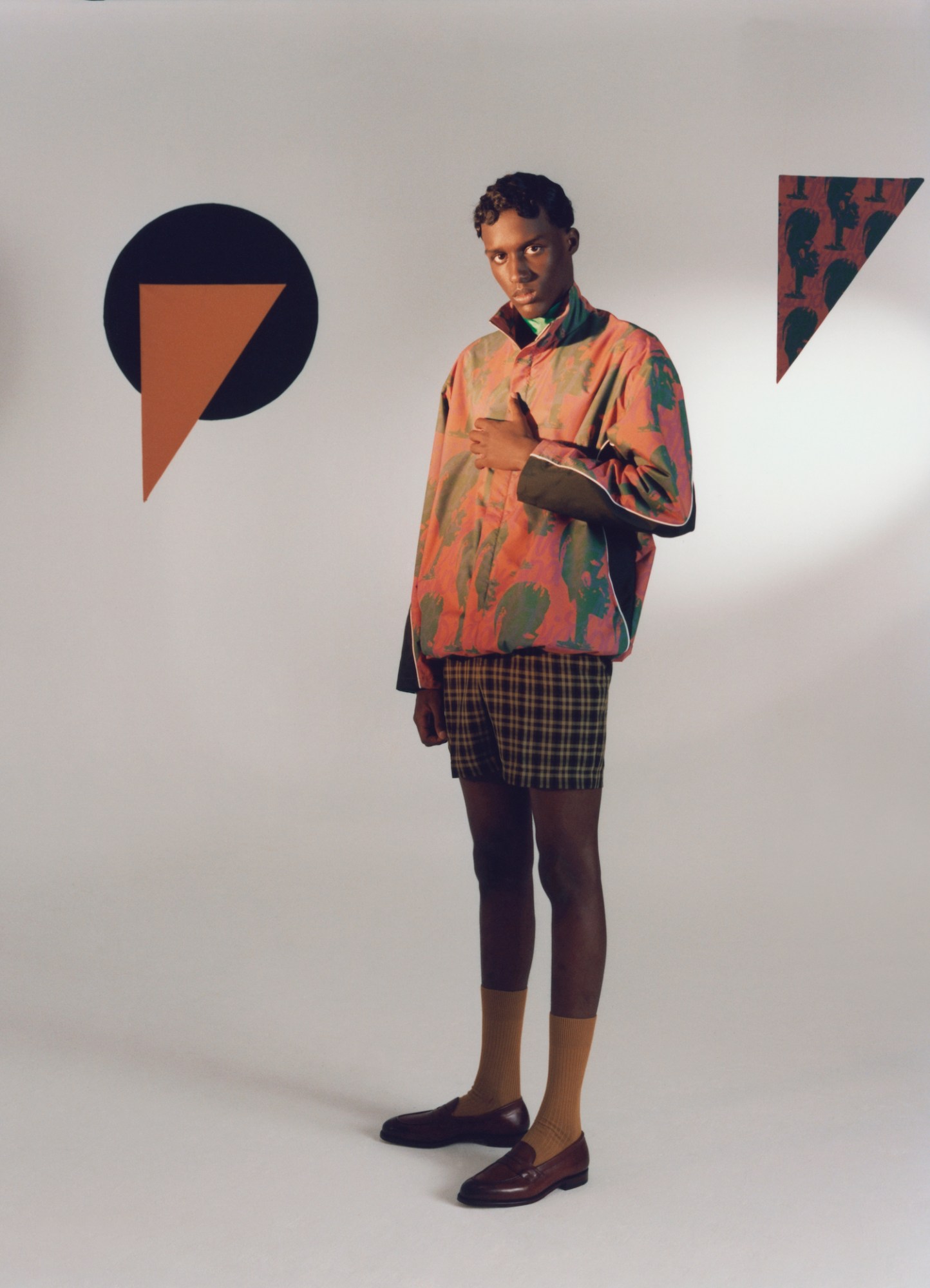
One of the things you’re particularly well known for is your considered approach to the fabrics you use. Did you face any limitations this season? And if so, how did you overcome them?
There were a couple ways. My team and I basically contacted everyone we’ve ever bought fabrics from before to see if they had any deadstock or any liability because of COVID. And we also did a partnership with this company called Re-Skinned, based in London. They’re a buyback scheme for big fashion brands and stores with excess, sale or faulty stock they don’t want any more. They gave us access to loads of stuff that we could use for the collection. And then we also sourced a lot of stuff locally. My studio’s really close to Tooting, and I love Tooting Market. It’s one of my favourite places in London, it’s absolutely bloody mental, but I love it, and we got some of our fabrics from the stalls. This idea of supporting your direct, local community is something I started looking into more during lockdown — I Iearned loads of my neighbours names, for one thing. And I think that in discussions around sustainability, it’s really important to consider the people around you as well as the planet at large. It also meant that I found some really funny stuff, some of it was absolutely nuts! It’s definitely been harder, but we’ve just had to be resourceful.
